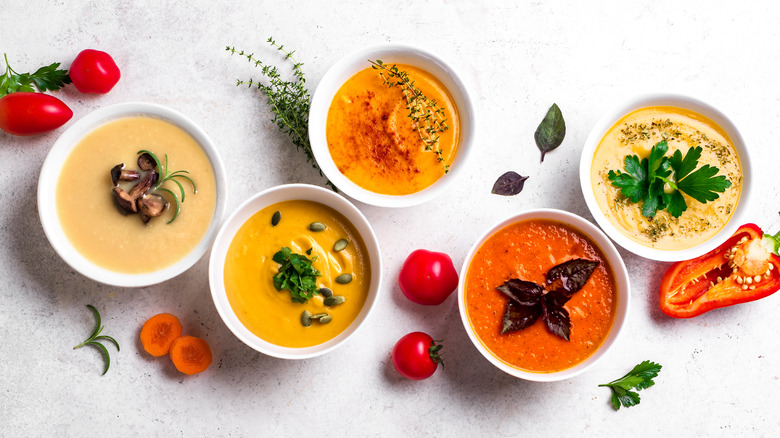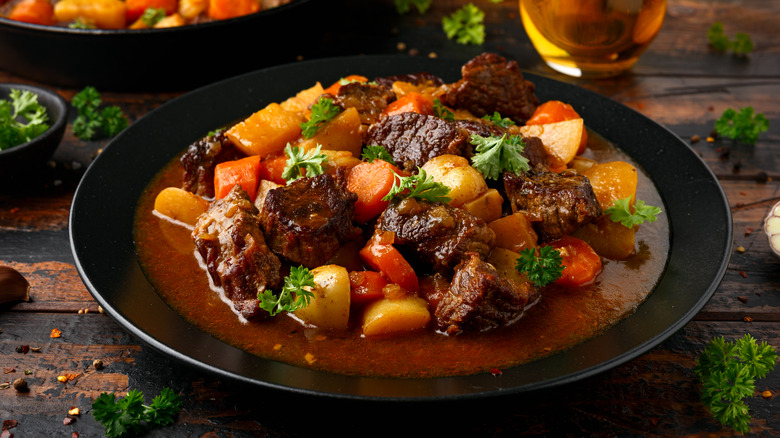Soup Vs Stew Vs Chowder: Here's The Differences You Need To Know
If you asked a philosopher to list life's most pressing questions, it's very likely that soup wouldn't feature heavily in that discussion. However, for some curious cooks, pondering the real difference between a soup, stew, and chowder can be as confusing as finding the meaning of life. Luckily, soup does have a definition (if a somewhat loose one), as do its sister dishes.
Since soup's definition is central to understanding stews and chowders, it is easiest to begin there. Generally speaking, soup is a dish made by cooking ingredients in water, broth, or another liquid. Some definitions will simplify even further, saying that soups only consist of liquids and leaving out any other attributes — but other definitions get more specific. Soups can have a range of textures, with some pureed and others chunky, and they can be piping hot or served cool, like in an ice-cold gazpacho. The liquid base can be anything from cream to broth to water. These qualities blur the lines of rigid definitions, so "soup" ends up being a blanket term that covers a whole lot of liquid dishes. According to many, "soup" also covers variations like chowder and stew — but that doesn't mean those two categories don't have their own unique, defining qualities.
Stew and chowder sit under the soup umbrella (probably)
It's largely agreed upon that chowder is merely a subcategory of soup, not an entirely distinct culinary species. Chowder's defining attribute is its consistency, as the dish is usually thick and often creamy, with dairy or starches in the mix. Chowders are also served hot and tend to have hearty chunks of potatoes, seafood, or vegetables. Now, there are a few exceptions (like a Manhattan clam chowder with its tomato base, instead of the cream base of a New England clam chowder recipe), but generally speaking, chowder is richer and chunkier than most other soups, and often features seafood.
Stew is where the doubt sets in. Depending on who you ask, stew is either another subcategory of soup or fits into a separate category all its own. Either way, stew contains meat, seafood, and/or vegetables that have typically been cooked for a short time first before adding liquid ingredients. The liquid in stew cooks the ingredients further, and is often reduced until it becomes thick (additional thickeners like roux may be added).
Those who distinguish stews from soups will point out that stew generally has less liquid than soup, and the ingredients undergo more low-and-slow cooking for a lengthy amount of time, while soups can be whipped up much faster. These defining qualities must be present to make something a stew, whether you place it into the soup category or not. Luckily, these definitions don't affect the deliciousness of your favorite comforting soup recipes.


